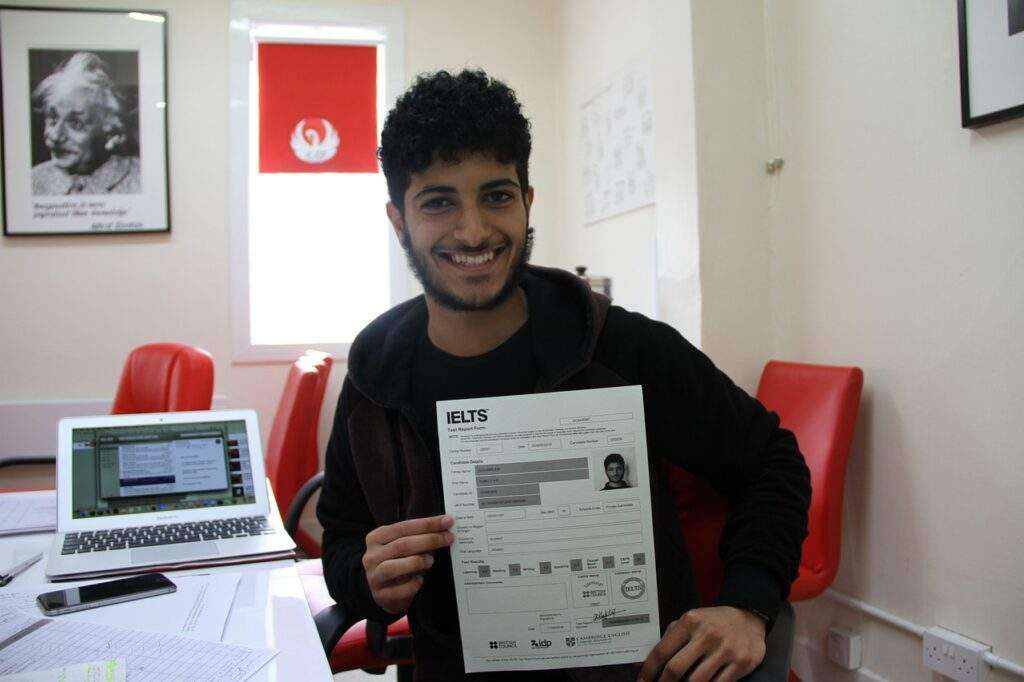When choosing a course to study abroad, Indian students often face a crucial decision—choosing an English language proficiency exam. Among the options available, two prominent choices are the Pearson Test of English (PTE) and the International English Language Testing System (IELTS). Understanding the differences between these exams is essential as it allows students to develop different approaches for each. We will delve into the disparities between PTE and IELTS like exam structure, scoring patterns, and costs.

PTE vs IELTS: Exam Structure
The first aspect that sets PTE and IELTS apart is their exam structure. PTE is a computer-based exam that utilizes cutting-edge technology for its assessment. Students must attempt four sections: speaking, writing, reading, and listening. These sections are integrated seamlessly into a single, comprehensive test. In contrast, IELTS is a more traditional exam that consists of separate modules. The listening, reading, and writing sections are paper-based and the speaking section is conducted face-to-face with an examiner. Another notable difference lies in the speaking component. In PTE, the speaking section involves speaking into a microphone, while in IELTS, it requires a one-on-one interaction with an examiner. Some students may find the computer-based format of PTE more comfortable, as it eliminates any potential nervousness associated with face-to-face speaking examinations.
PTE vs IELTS: Scores
Indian students applying abroad should understand the the PTE and IELTS scoring patterns to score better. In PTE’s scoring system, scores range between 10 and 90. Examiners evaluate every section separately, and calculate the overall score based on the student’s performance in all sections. The scoring criteria for PTE are transparent and provide a clear understanding of the candidate’s language proficiency level.
On the other hand, IELTS employs a band system to evaluate candidates. Students receive a score for each section and an overall band score, ranging from 1 to 9. The band descriptors outline the skills required for each band, helping examiners guage a student’s overall proficiency. However, some students may find the band system slightly more challenging to interpret when compared to PTE’s numerical scoring.
IELTS vs PTE: Cost
Students must consider the exam fee and other associated costs before taking the PTE or IELTS exams. PTE and IELTS differ in terms of their cost structures. The PTE exam fee varies depending on the location and is typically higher than IELTS. However, PTE offers faster results and publishes scores within five business days. This quick turnaround time can be advantageous for students who need to meet application deadlines promptly. In India, the the PTE Academic exam fee is approximately ₹13,300, while the IELTS exam fee ranges between ₹14,000 to ₹15,000. It’s worth noting that these fees may be subject to change, so it’s essential to check the official websites for the most up-to-date information.
While PTE offers a computer-based format and a numerical scoring system, IELTS follows a traditional approach with a band scoring system. The choice between the two exams also depends on factors such as exam fees and the desired speed of result delivery. Ultimately, both PTE and IELTS are widely recognized and accepted by universities and institutions worldwide. It is recommended that students research the specific requirements of their desired universities or countries to determine which exam aligns better with their needs and preferences. Proper preparation, along with a clear understanding of the differences between PTE and IELTS, will undoubtedly boost Indian students’ chances of success in their study abroad endeavors.